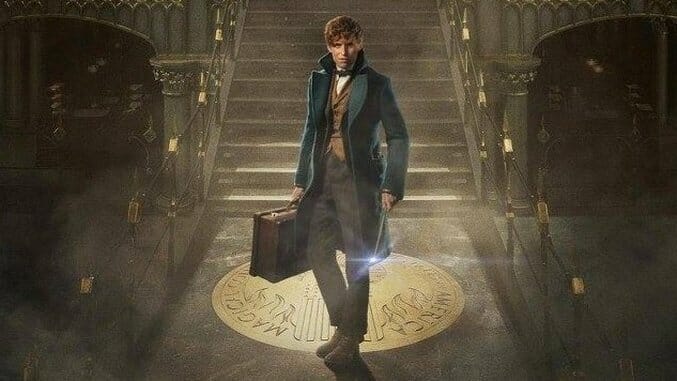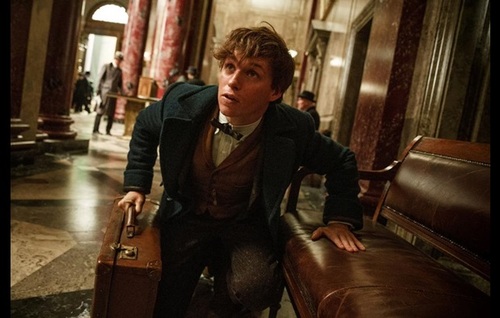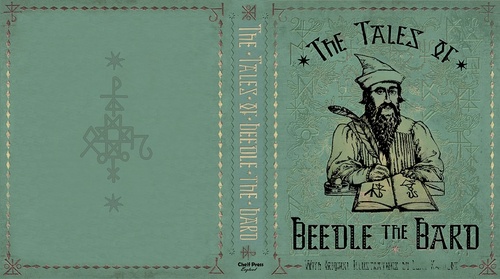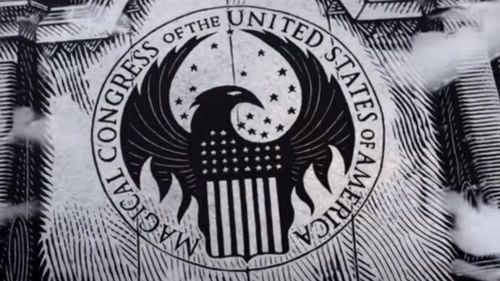Why a Fantastic Beasts Adaptation Could Be the Best Harry Potter Videogame Ever
Games Lists Harry Potter
It’s the nature of the beast, especially one such as the Harry Potter universe, to march onto new opportunities for that sweet Muggle dollar. With the conclusion of Harry Potter and the Deathly Hallows – Part 2 in 2011, Warner Bros. and company clearly had a challenge before them in squeezing what little water was left out of that Sorcerer’s Stone. Thankfully for all involved, the questions propped up by Rowling’s companion piece Fantastic Beasts and Where to Find Them are plentiful enough for what the film studio is calling “at least” a trilogy of new films to release over the course of the next four years.
Fantastic Beasts tells the story of Newton Scamander, the man who would go on to become the world’s foremost expert on magical beasts. Scamander found himself the victim of a “tedious to the extreme” position at the Ministry of Magic’s Office of House-Elf Relocation before transferring to the Beast Division, and was commissioned to compile a compendium on all creatures that walked the wizarding world. The 2016 film by the same name picks up during Scamander’s stop in New York, wherein the researcher’s magically-expanded suitcase containing several creatures is opened up by a Muggle, causing an international incident.
But what is a refreshed media blitz without a wave of tie-in products and merchandise? Every proper Harry Potter installment received a slew of videogame adaptations, on consoles as old as the Gameboy Color and as recent as the PlayStation 3’s EyeToy peripheral. Now, with the promise of a new world to explore, new characters to get attached to, and new threats to face, here’s why Fantastic Beasts could make for the Potter series’ best videogame adaptation yet.
1. A World Unhindered By Class Schedules
As inoffensive as most Harry Potter games were, it was impossible to escape the rigid obligations of being a student at Hogwarts. Yes, plenty of minigames and extracurricular activities broke up the monotony, but for the most part, every Harry Potter game was structured around going to class, learning your spells, and using them to defeat an endless corridor of progressively more threatening baddies.
That’s precisely why Fantastic Beasts, even for how little we actually know about it, is so promising. In Scamander’s own introduction, readers learn of his globetrotting history through countless lairs and burrows across five continents and over 100 countries. Couple this with a world governed more by actual wizarding politics rather than Harry’s inability to ask Cho Chang out on a date, and you’ve got a recipe for a truly open-world game set absolutely anywhere. Rural England forest? Check. Foggy Hungarian mountainsides? Check. Even the upcoming film’s setting of 1920s New York would be the perfect place to balance more dangerous magical practices with careful crowd observation, lest you alert more Muggles to the existence of witches and wizards.
2. The Beast Catalog AKA It’s Bloody Monster Hunter!
Turns out you can cram a lot of lore into seven major novels, and magical beasts generally always got their due in each film installment. It’s practically impossible to walk through the Forbidden Forest without encountering a giant spider colony or the occasional centaur. But even one glance at Scamander’s work will tell you there are countless creatures beyond Hogwarts’ wooded lakeshores, and that’s where a Fantastic Beasts game could truly rival other series that infuse hunting mechanics, such as Far Cry and The Witcher.
Sure, you’ve got your classic dragons like the Chinese Fireball and Romanian Longhorn, and your garden variety gnomes, but more unique beasts can present the player with interesting challenges of both mind and magic. The Kelpie, a water demon found in Britain and Ireland, takes the form of a horse before luring its prey in and dragging them to the bottom of a lake. The Lethifold resembles a thin black cloak and attacks by wrapping itself around the victim and suffocating them. The Quintaped is a hairy spider-like creature born from a Hatfields and McCoys-esque grudge between two wizarding families. When one family transfigured every member of the rival into the hideous beasts, the ensuing bloodbath left none but the newly minted creatures left alive, unable to wield a wand or find help beyond their island residence. The opportunities for experimentation, puzzle solving and combat strategy are endless, and learning the properties of each beast could serve as half the fun.
3. Companion Materials Could Help Fill Out the Game’s World
If you’re going to adapt a book that was originally made to expand and capitalize on Harry Potter’s fame, it only makes sense to expand on the book itself. Originally published in 2001, Fantastic Beasts was only one of three companion books published between 2001 and 2007, including Quidditch Through the Ages and Tales of Beedle the Bard. Any developer of a Fantastic Beasts game has the unique opportunity to use these preexisting books (or more) as potential guides for in-game scenarios.
Yes, there are seven major Harry Potter books to pull from, but seeing as these three titles are structured as reference books or short form literature, it would be incredibly easy to call upon players to consult each book for bits of helpful info. Aside from the catalog of beasts, the Fantastic Beasts book would be helpful for gauging each creature’s particular weaknesses or behaviors. Imagine coming across a Kelpie and not knowing why a horse felt it necessary to stand neck deep in water, or learning how the graceful Demiguise manages to disappear out of thin air. There’s also the helpful Ministry of Magic (M.O.M. for short) classifications attached to each creature. No sense in approaching that XXXX-level creature (“Dangerous / requires specialist knowledge”) when you’re only capable of domesticating lower level beasts. That’s to say nothing of the XXXXX-level creatures, or “known-wizard killers.”
4. Gaps In Scamander’s History
The Fantastic Beasts film will have a peculiar hurdle in bringing series fans into the thick of Scamander’s career as a Magizoologist, shortly after his roughly eight years abroad. While the film will no doubt attempt to breeze through enough history to establish Scamander’s legendary status, a videogame adaptation has the liberty of filling out these numerous gaps with much more artistic flair than a flashback or quick quip.
A game based on those early years abroad has the potential to closely mirror the lack of knowledge and experience both Scamander and a new player have in tracking down creatures. Couple that with a skill tree developed over the in-game years, and the natural progression could even slide right into the opening moments of the film.
If you want to go a little more dramatic and political with it, Scamander’s later life was also rife with notable achievements, including the inception of the Werewolf Registry and the 1965 Ban on Experimental Breeding. Werewolves being the touchy subject they are in the wizarding world, certainly an interesting tale could be made out of the various factions fighting for fair treatment of these unfortunate bite victims. The Harry Potter series grappled with the subject by its third installment, so even the darker elements of life as a werewolf (some newly cursed witches and wizards reportedly begged for death rather than transform) seem to be fair territory in a young adult-oriented game.
5. America: The New Salem
Despite the wealth of lore and companion texts, little is still known about America’s affairs during Harry Potter’s rise to fame, or any other time period for that matter. The country has its own governing body, the Magical Congress of the United States of America, and even its own wizarding school, but for those diehard fans that have already devoured every morsel of info on the upcoming film, one major point stands out.
The creatures sprung from Scamander’s magical suitcase are but one threat to the citizens of 1920s New York. Relations between America and Europe’s wizarding governments were already stressed thanks to the emergence of a group of radical Muggles known as the “New Salem Philanthropic Society.” If the name didn’t tip you off, the group’s primary mission is the exposure and eradication of all witches and wizards. Pleasant, but certainly ripe for narrative exploration. The only instances of non-magic hostility we get in the series are typically from bumbling fools like the Dursleys, but this great schism is the first time the matter has been approached with such seriousness. American wizards are terrified to show their faces in public for fear of retribution. If the wizards vs. Muggle struggle wasn’t already a clear metaphor for social divides, this will surely shine a light. Whatever the case, Fantastic Beasts promises a level of inventiveness only achievable when you escape the confines of a decade-long franchise, and those leading such an endeavor would be remiss to ignore the magic made possible through a modern videogame adaptation.
Joseph Knoop has written for Playboy, PC Gamer and more.




